#ecological justice
Text
There's a popular post going around about how monocrop logging forests are bad and not "renewable," as the logging industry claims, and that's correct, but there's an addition that basically says that more diverse replanting is useless and it's really bugging me. I understand where it's coming from—obviously young forests aren't going to have anywhere near the biodiversity of old growth biomes—but the way it's worded feels really defeatist to me. We have to start somewhere! Conservation-focused replanting/managed succession efforts are not universally a net zero. We have the power to offer the world a little relief.
#txt#also. land back obviously. i hope youd know where i stand on that if you follow me#ecological justice
208 notes
·
View notes
Text





For This Land: Writings on Religion in America, Vine Deloria Jr
The essence of the Indian attitude toward peoples, lands, and other life forms is one of kinship relations in which no element of life can go unattached from human society. Thus lands are given special status because they form a motherhood relationship with the peoples who live. on them. Too often this dimension is twisted when non-Indians make it a sentimental truism and the Indian philosophy appears shallow and without insight. But the true meaning of the motherhood of the land is that, like a mother, it shapes and teaches our species and, according to the peculiarity of the area, produces certain basic forms of personality and social identity which could not be produced in any other way. White Americans see the basic differences in peoples which are expressed regionally but they too often mistake historical experiences for the influence of lands on people. To find a "southern" identity without understanding the unique characteristics of the southeastern lands is to vest in the memories of our species a shaping ability which does not exist. According to geographical area radical differences occur which are more than historical accidents and which require reflective consideration to understand fully.
With respect to other life forms, this attitude manifests itself in what one could call "kinship" cycles of responsibility that exist between our species and the other species. Hyemeyosts Storm attempts to bring this unique web of responsibilities into play with modern terminology in his book Seven Arrows, when he allows non-human characters to participate in the unfolding of the story. This transformation brings out a dimension of life common to Indians but unique and unsuspected by non-Indians. For the responsibility of our species is to perform responsible tasks with respect to each form of life that we encounter, learning from them the basic structure of the universe, and ensuring that they receive in return the respect and dignity accorded them. And this acknowledgement of the dignity of other life forms, which is a simple but profound recogni tion, underlies all Indian attitudes toward the organic world. Our species is allowed to use them for food but in return we must ensure that their sacrifice becomes a means of fulfillment. Social scientists, observing Indian behavior toward animals and plants, usually describe this activity as "totemistic" or "animistic" implying that Indians intellectually believed the universe to contain uncontrolled and arbitrary powers. But the essence of this behavior is the maintenance of dignity throughOut the organic world. The struggle for dignity thus dominates Indian spirituality but the struggle is one of conferring dignity, not seizing or manufacturing it.
Many non-Indians come to understand the bestowing of dignity on others, even on other life forms, but they still fail to see the fundamental distinctions which flow from the Indian attitude of reflection. Perhaps the most basic of these distinctions is the recognition of sexual and age differences. The traditional ethical norm for non-Indians is the admission of the brotherhood of our species and the concomitant responsibility to treat others like we would like to be treated. Equality and unity easily become a homogeneity in this ethic. American Indians view ethical relationships with much more sophistication, allocating duties, privileges and respect according to a unique system of family relationships, older people becoming grandfathers and grandmothers, men and women becoming brothers and sisters, wives and husbands, and even strangers occupying the place of cousins within the network of specific relatives who must show concern for one another. Apart from participation in this network, Indians believe, a person simply does not exist. But within the network attitudes and behaviors must be expressed in particular terms, not in general and often unfulfilled rules of conduct.
Following directly from this ethic is the American Indian understanding of human personality and the meaning of life. If we are required to show respect and create dignity for others around us, then this respect and dignity cannot be simply a surface admission of social status. Dignity can be given even to the unworthy with devastating irony and people within the community can see in the most precise fashion whether or not the individual who is honored in fact deserves such praise. Such lavish but undeserved praise can be more damning than an insult.
Individuals strive as best they can to deserve the dignity which the community gives them and it is extremely embarrassing to be praised and honored by one's better while failing to perform according to expecta; tions. Giving dignity therefore encourages individuals to deserve the accolades they receive and the unified attitude of social groups towards the world and towards others is the cultivation of virtues. A person hailed as wise, strives to be wiser, a person acclaimed as brave, seeks to be braver, and a person honored as a parent seeks to become better in that endeavor.
The intense individual concern to deserve the respect and dignity which one's family and society accords one produces a mature attitude of reflection which grows with the passage of years and the accumulation of experiences. Experiences are hardly an individual affair, however, for within each community is the collective memory of past events and the behavior of people within that immediate history is common know-edge. Over decades of community life the leadership emerges as the community recognizes in the continual activities of individuals a sense of consistency, of commitment to the community, and of the course of wise decisions. As people come to deserve the respect and dignity with which they are presented, the community forms around the time-tested people of substance. In most Indian communities in the old days the most respected person was the one who gave freely of physical wealth, who showed a concern for the unfortunate, and who allowed weaker members of the community to rely on him/her. Reflection, then, is a way of life, the consistent direction and substance of individual existence, and not a unique intellectual ability. It is a matter of extended consis-fency in behavior, not a matter of correct or numerous beliefs.
The circle of these concepts can be seen to be integrated into a basic attitude toward life and its experiences. Rather than leading to a logical conclusion we see a network of attitudes and behaviors which characterize both individuals and societies. Nothing derives from a cause-and-effect chain of circumstances. Everything becomes an aspect of everything else, distinguishable only by the unique situation in which individuals are called upon to respond to new conditions. Without the
5 notes
·
View notes
Text
The sacred presence of love lives within all of life, within the earth herself, within the creatures that walk, swim, fly, crawl upon and within her. Only this knowing can give us the courage and the strength we need for the work we are called to do with the earth as she heals from the ravages of our despoiling her.
1 note
·
View note
Text
Quick post on what's happening in Atlanta right now
So there's this beautiful trail in Atlanta called the South River Forest Trail. As we all know, Atlanta Georgia is renowned for their tree cover and historic forests.
The City of Atlanta and corporations like Delta, AT&T and Amazon are funding a massive police training center that will destroy the forest.
Dubbed ‘cop city’ by many protesters, this will cost about $90 million to build. This will be used to further militarize Atlanta’s police leading to more incidents of police brutality in the city.
On January 18th indigenous activist Manuel “Tortuguita” Teran was shot and killed by the police for defending this historic forest from destruction. Their reason? “He did not comply” (Tort went by They/them/it but report said “he”). Many protests have been going on in Atlanta to defend this forest.
Since Tortuguita's death, the situation has quickly deteriorated
This forest is very dear to me but I am unable to physically protest at the moment, so I am handing this off to Tumblr to spread awareness. Rebloging this may help this tragedy become part of national news instead of just an Atlanta problem.
Donation and petition links to stop cop city
https://www.gofundme.com/f/stoptheswap2020
https://act.colorofchange.org/sign/no-cop-city-atl/
https://defendtheatlantaforest.org/solidarity
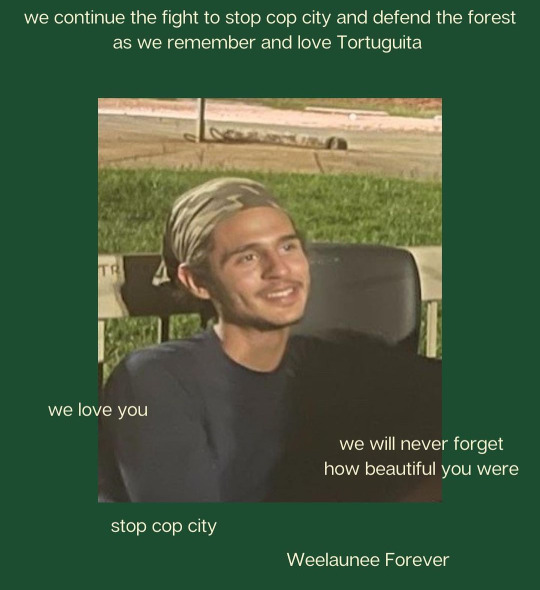
#stop cop city#atlanta#Georgia#mutual aid#social justice#ACAB#protect the forest#environmetalists#politics#tw guns#tw police violence#tw death#Atlanta southern forest#cop city#at&t#amazon#delta#forest#ecology#let me know if i should tag anything else#atlanta south river forest
10K notes
·
View notes
Text
Breaking news from Panama! 🟢
In a historic vote, the nation’s highest court today ruled the Minera Panamá mining contract for an open-pit mine unconstitutional, marking a WIN for biodiversity, local communities, and our planet.
Panama has an opportunity now to be a leader in safeguarding precious ecosystems and protecting biodiversity. This ruling champions the rights, voices, and well-being of local communities over profit-driven interests.
This victory is also a beacon of hope for our planet’s future. Safeguarding irreplaceable ecosystems like these is critical to combatting climate change and biodiversity loss. Congratulations to the people of Panama, who overwhelmingly rejected profit over planet. We continue to stand with you!
Video credits:
Collaboration between @duletvindigena @waguafilms @mullu.tv & Passu Creative Community
Indigenous Protester - TV indígena and waguafilms
Great Green Macaw - Hans Norelius, CC BY 2.0
Gemini's Dart Frog Jaime Culebras / @photowildlifetours
#PanamaTeQuieroVerde
#PanamáValeMásSinMinería
#panama#central america#latin america#abya yala#environmental justice#climate justice#ecology#anti imperialism#extractivism#neocolonialism#anti colonialism#indigenous rights#degrowth#i'm so happy for my country 😭❤️
532 notes
·
View notes
Text
Notes Toward Finding Community, Or, How to Find Community When You Feel Isolated
Neoliberalism sucks for a ton of reasons. From the enclosure of every common, to the commodification of every creation, it feels like a muzzle on humanity that gets tighter and tighter. One of the most underexplored aspects of neoliberalism is the way in which it creates and reinforces isolation. People don’t really have communities outside of consumption or compulsion. This is problematic for a ton of reasons, namely that it prevents us from fulfilling our basic needs. Humans are social creatures. People need to have connections with folks. People may not all need the same levels or intensity of connections, but connections are important nonetheless. To lack in the ability to socialize meaningfully is to ensure worse health outcomes, mentally, emotionally, and physically. But, I don’t mean to freak you out. I think that there are steps we can take to star building community, bridging gaps with the people around us.
Think About What You Want
When folks feel very isolated, it can be easy to accept anything. If we’re in a vulnerable state, that could leave us open for ending up in precarious situations. One way to fight against this is to start from the position of imagining what community looks like. Is the type of space we want to occupy based around interests (fandom, hobbies)? Religions, spiritualities, social issues? If we are able to list the things that excite us, we have a good idea of what to look for, and can focus our efforts towards finding those spaces.
Find the Watering Holes
With the spaces we’re interested in on hand, youcan find where folks gather. Every community has virtual and/or in-person spaces. For example, if you’re a film fan, you can look for indie cinemas, folks putting on screenings, or look into film societies where you live. For activism, I’ve written a whole guide on how to get started. Looking for those spaces will allow you to start getting integrated in the space. Really think about how you can occupy the same physical and digital spaces of people who are into what you’re into.
Go Meet Folks
Now, this may be difficult, depending on your disposition. The quickest way to meet folks is to put yourself out there. It’s always vulnerable to put yourself on the line in this way, but it’s super necessary. When you’re in spaces with similar folks, you have talking points built in! You don’t have to worry if the folks around you will like movies at film club. If you are enjoyable to be around, through being nice, interesting, and/or being an active listener, you’ll be making connections in no time. If you’re not willing to talk to folks, it’ll be hard to make connections. Being open is an asset towards the end of getting connected. At the very least, consistently go to events and spaces in your interest area(s). Maybe you’ll bump into an extroverted person that can show you the ropes.
Be the Change You Want to See
As you get out there, think about how you can start catalyzing community. Maybe you host a dinner for neighbors. Maybe you start a book club. Or even a neighborhood garden, or cleanup event. In this way, you’re flipping the issue on its head. You’re creating the space to meet folks yourself. It’s like being a magnet, drawing others to you.
We need community. It’s a necessary thing, you know? So, hopefully, keeping these things in mind helps in that regard.
#economics#economy#econ#anti capitalists be like#neoliberal capitalism#late stage capitalism#anti capitalism#capitalism#activism#activist#direct action#solarpunks#solarpunk#praxis#socialism#sociology#social revolution#social justice#social relations#social ecology#organizing#complexity#resist#fight back#organizing 101#radicalization#radicalism#prefigurative politics#politics
587 notes
·
View notes
Text

#sharia law#vote biden#vote blue#vote democrat#please vote#voting#election 2024#project 2025#science#geology#biology#ecology#stem#environmental science#women's rights#trans rights#human rights#reproductive rights#animal rights#abortion rights#capitalism#political#politics#abortion#reproductive freedom#abortion is healthcare#reproductive justice#bodily autonomy#lgtbqia+#lgtbq community
78 notes
·
View notes
Text
Was reading a book about how pagans can envision and create a sustainable future and one of the chapters was taking about shame, and how shame around sexuality leads to shame around everything else that ties you to the earth, and so you try to disconnect yourself from nature and that leads to anti-ecological behaviour. Honestly a fascinating perspective - very liberating for a queer environmentalist!
#solarpunk#hopepunk#environmentalism#cottagepunk#social justice#community#optimism#bright future#climate justice#tidalpunk#paganism#shame#queer ecology
147 notes
·
View notes
Text
Source: Tripybara on Threads
Israel's genocidal violence isn't just killing Palestinians.
It is killing the entire ecosystem of the Levant
Israel must be stopped.
Nothing. Literally nothing justifies this.
(Also this is further proof that Israel is nothing but a european settler colony. Because no Indigenous people would ever do this to their land. Ever.)
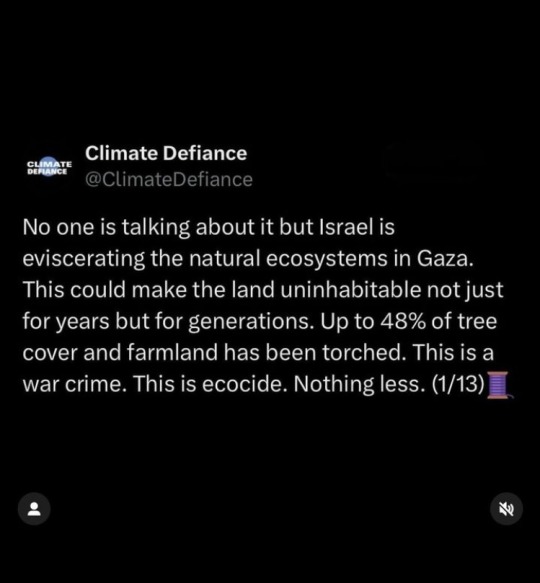

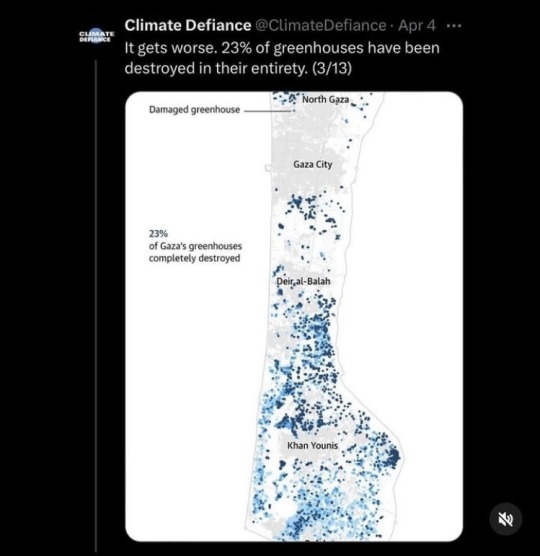
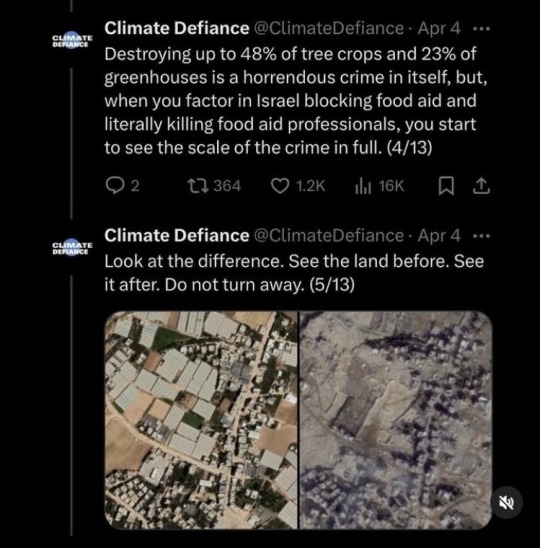
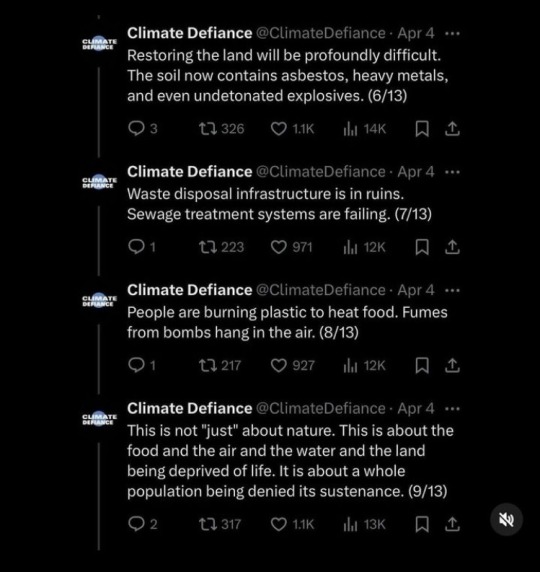
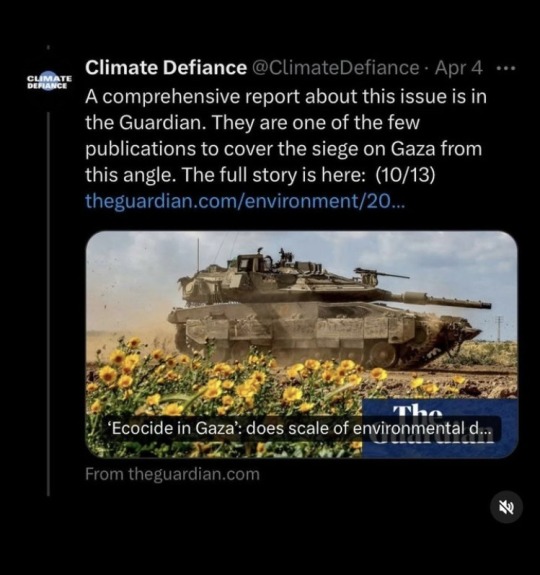
#threads#threads app#social justice#current events#human rights#yemen#tel aviv#jerusalem#free palestine#gaza#free gaza#palestine#gaza strip#gaza genocide#save gaza#gazaunderattack#freepalastine🇵🇸#free palastine#from the river to the sea palestine will be free#palestine 🇵🇸#ecology#environmentalism#environmental science#environmental awareness#environmental issues#environmental impact#news on gaza#palestine news#stand with gaza#gazaunderfire
81 notes
·
View notes
Text

T H I S
#ecological imperialism#environmental justice#environmental racism#planet and people over profit#antiracism over apartheid#free palestine#free sudan#free congo#free haiti#free west papua#free us all#freedom over fascism
47 notes
·
View notes
Text

Chap 12. Melancholy Natures, Queer Ecologies by Catriona Mortimer-Sandilands (part 3, final)
Queer Ecologies
‘what it might mean to inhabit the natural world having been transformed by the experience of its loss’?
‘[the queer artist's] natures are not saved wildernesses; they are wrecks, barrens, cutovers, nuclear power plants: unlikely refuges and impossible gardens. But they are also sites for extraordinary reflection on life, beauty, and community’ (344)
AIDS and Other Clear-Cuts
The artist (Jan Zita Grover’s North Enough) writes about moving from San Francisco, where she has worked as a personal caregiver to many individuals who were dying, and died of, AIDS, eventually to the woods of Northern Wisconsin and Minnesota hoping for ‘a geographic cure’ to her burnout and grief. (344)
‘in their persistence [grief, mourning], generate a form of imagination—an awareness of the persistence of loss—that allows her to conceive of the natural world around her in ways that challenge the logic of commodity substitution characterizing contemporary relations of nature consumption” (344)
“The north woods did not provide me with a geographic cure. But they did something much finer. Instead of ready-made solutions, they offered me an unanticipated challenge, a spiritual discipline: to appreciate them, I needed to learn how to see their scars, defacement, and artificiality and then beyond those to their strengths—their historicity, the difficult beauties that underlay their deformity. AIDS, I believe, prepared me to perform these imaginative feats. In learning to know and love the north woods, not as they are fancied but as they are, I discovered the lessons that AIDS had taught me and became grateful for them” (344)
Rather than the landscape of her dreams, the land looks more like a candidate for reclamation. Through Grover’s research we learn that the region is one that been ‘systematically abused: logged several times, drained, subjected to failed attempts at agriculture, depleted, abandoned, eroded, invaded, neglected.”

Jack pines are predominant in the region; tenacious, ‘the first conifers to reestablish themselves after a fire” (16), in their own way remarkable even as they are useless for lumber, short lived, and not at all the sorts of trees about which adjectives like ‘breathtaking’ circulate” (345) they are a loud testament to the violence that has generated them.
“the diminishment of this landscape mortified and disciplined me. Its scars will outlast me, bearing witness for decades beyond my death to the damage done here” (20) But still: the love emerges, painfully, gradually, intimately. (345)
She experiences the landscape in terms of loss and change, rather than idyll and replacement. It is all personal; it is all about developing a way of making meaning that recognizes the singularities of the past and takes responsibility for the future in the midst of intimate devastation. (345)
‘Environmental hubris’—fly fishing, the introduction of non-native fish to the river, changing temperatures of rivers caused by logging and diversion; specific policies, politics, and technologies that have had effects on the rivers, the fish, and the other species throughout the river and the north woods (356)
A refusal to demonize the ‘invasive’ species; Grover herself is ‘invasive’ both culturally and personally (white settlers and big city imports) thus her ethical claim is not for purity but for an active and thoughtful remembering of historical violences in the midst of ongoing necessity of movement and change (346)
Seek relationships with Clear-cuts and landfills in order to bring to the foreground the massive weight of human devastation of the natural world; “a discerning eye can see how unstewarded most of this land has been. The charm lies in finding ways to love with such loss and pull from it what beauties remain” (81) (347)
“she does not romanticize the dying even as she might mourn their loss to the world; instead [through Grover] we witness each loss as particular, irrevocable, and concrete: she is their witness” (347)
Can we learn to see these landscapes as creation as well as destruction?
Rather than mourn the loss of the pristine, she carefully cultivates an attitude of appreciation of what lies before her, beyond the aesthetic wilderness to the intricate details of human interactions with the species and landscapes of the region. In this manner she comes to be able to find the beauty in, for example, landfills and clearcuts; far from naivete or technophilia, this ability is grounded in a commitment to recognizing the simultaneity of death and life in these landscapes, the glut of aspen-loving birds in the clear-cut, the swallows, turkey vultures, and bald eagles near the landfill.
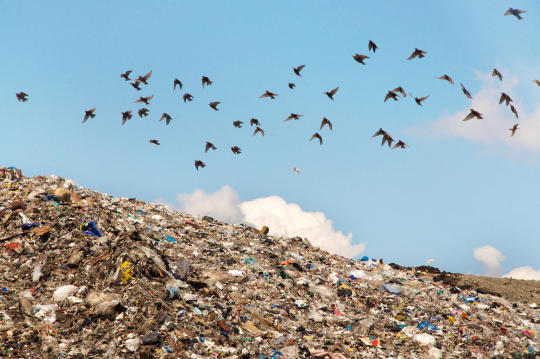
--
It is necessary to face our fear and pain; we have to make room in our relationships with the natural world, queer and otherwise, for the recognition that that is what we might be feeling in the first place (355)
#queer ecologies: sex nature politics desire#queer ecology#queer theory#ecofeminism#critical ecology#environmental politics#ecology#aids crisis#mourning nature#ecogrief#colonialism#environmental degradation#melancholia#queer politics#melancholy#environmentalism#climate and environment#environmental justice#forests
63 notes
·
View notes
Text
The Green Scare, and How the FBI Killed Environmentalism
youtube
#anarchist#anarchism#climate and environment#environment#environmetalists#climate action#climate change#climate justice#climate crisis#climate news#stop cop city#antifa#ecology#ecocide#ecopunk#eco anarchism#Youtube
37 notes
·
View notes
Text
Decolonize Research through Critical Ecology
How do we ask better questions about what it means to be a researcher? My work with Critical Ecology Lab, featuring Dr. Suzanne Pierre, allowed me to understand more of how research must also extend itself to liberation rather than extraction for science.
----------------------------------------------------
youtube
If you want to learn more about her work, I highly recommend watching the episode- love you all!
#science#ecology#political science#research#grad student#uc berkeley#researchers#berkeley#social justice#environmental justice#environmental education#sustainability#Youtube
28 notes
·
View notes
Text

Tactics
The power of worker strategy and tactics – as workers – derives from their special place within processes of re/production and distribution. The most powerful tactic on the whole is the strike – the refusal to do land and labor destroying work. The strike is the most potent direct action – stopping harm from happening and making it difficult or impossible for capital to continue them. It is not a moral appeal, request, or even demand – it is consequential action that achieves the intended aim directly, without the mediation involved in third party actions.
This depends of course on the level of rank-and-file organizing and capacity to stop scabs from being deployed or to block conservative union leadership from crafting deals with management. No tactic is deployed in a pure form and organizing is always itself an action. But even then, using scabs incurs a cost on capital.
Another key tactic is sabotage. The place of workers in acts of sabotage can be crucial when we talk about green actions, because sabotage can have harmful consequences to natural environments, particularly where heavy industry is involved. Workers have a close familiarity and understanding of industrial processes they are involved in and how they can be sabotaged effectively in ways that are not destructive of nature. They also know the most significant break points to shut things down.
Workers, because of their placement and positionality also have access to industrial processes that environmentalists and others do not have and may not be able to gain. This access cannot be overlooked.
I have had numerous conversations with workers, going back to my days as an autoworker, who carry out sabotage within industrial plants to block harmful processes from happening (plugging drains, stopping effluent, disabling machinery with toxic exhausts, etc.). Sometimes it can be as innocuous in appearance as putting a part on the assembly line slightly improperly and ruining most of a shift of production (as I may or may not have done).
Blockades. Logistical workers have long histories of organizing blockades in support of community movements and against destructive ecological or social conditions. Perhaps the most prominent example recently has been the blockading by dockworkers of Israeli state shipping lines.
Boycotts. Workers can effectively initiate boycotts of harmful products, working with community members to take harmful processes or products out of operation. Insider boycotts against harmful materials or against materials hat are sourced from ecologically or socially destructive origins or from dubious sources (apartheid companies, etc.) offer unique promise.
#anarcho-syndicalism#class struggle#direct action#Environmental activism#environmentalism#Environmental Justice#green syndicalism#syndicalist#union organizing#Working Class#anarchism#revolution#climate crisis#ecology#climate change#resistance#community building#practical anarchy#practical anarchism#anarchist society#practical#daily posts#communism#anti capitalist#anti capitalism#late stage capitalism#organization#grassroots#grass roots#anarchists
27 notes
·
View notes
Text

The South River Watershed Alliance is having an entire week of divestment for corporations supporting Cop City! They will be having toolkits and webinars all week open to everyone not just people in Atlanta!! Here's the link to either host or attend an action. We need everyone's help to Stop Cop City!!!
#stop cop city#atlanta#politics#weelaunee forest#environmentalism#tortuguita#ecology#Atlanta Southern River Forest#enviornment#biology#mutual aid#intersectional activism#protect the atlanta forests#cop city#Georgia#social justice
793 notes
·
View notes
Text
The people of Panama are coming together to defend nature, calling on the country’s Supreme Court to declare a controversial mining project – in the protected rainforest Bosque Donoso – as unconstitutional.
This area, lying in the heart of the largest biological corridor in Mesoamerica, is a lifeline for many migratory species. It is critical to the livelihoods and cultures of local and Indigenous communities, and is home to wildlife that includes macaws, tapirs, monkeys and jaguars. This mining activity would have destructive impacts on the surrounding ecosystems, species, and people.
A global spotlight can help Panamanians win a critical victory for biodiversity and can pave the way for a more sustainable future.
Sign the petition to halt the mining project in Panama at this link: https://chng.it/dMzbJSxv7v
#PanamaTeQuieroVerde #PanamáValeMásSinMinería
Video credits:
Collaboration between @duletvindigena @waguafilms @mullu.tv & Passu Creative Community
Narrated by @rosedelizg
Cover photo by @enlayesk507
#panama#central america#latin america#abya yala#environmental justice#climate justice#ecology#anti imperialism#extractivism#neocolonialism#anti colonialism#indigenous rights#signal boost
268 notes
·
View notes